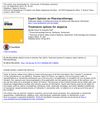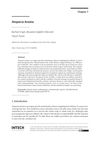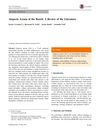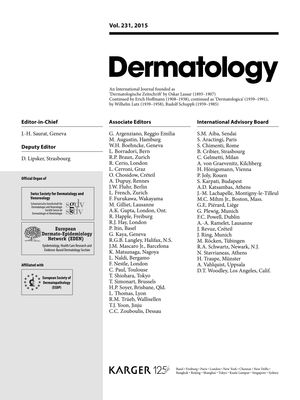TLDR The document covers various dermatological treatments and conditions.
The document "Contents Vol. 231, 2015" from the journal Dermatology included studies on dermatological conditions such as a long-term study on UV-free blue light for mild psoriasis, a meta-analysis comparing tacrolimus and pimecrolimus for atopic dermatitis in children, and an evaluation of plasmacytoid dendritic cells for diagnosing lymphocytic cicatricial alopecias. It also featured a study on 308-nm excimer laser therapy for alopecia areata and an investigation into CYP19A1 gene polymorphisms associated with female pattern hair loss in a Chinese population, along with various case reports and reviews on conditions like psoriasis, atopic eczema, bullous pemphigoid, and hidradenitis suppurativa.
 14 citations
,
April 2019 in “International Journal of Women's Health”
14 citations
,
April 2019 in “International Journal of Women's Health” Some treatments can stabilize Frontal Fibrosing Alopecia, but more research is needed to find effective treatments, and hair transplants often fail.
 17 citations
,
August 2015 in “Expert Opinion on Pharmacotherapy”
17 citations
,
August 2015 in “Expert Opinion on Pharmacotherapy” The document concludes that oral finasteride and topical minoxidil are effective for genetic hair loss, while other treatments for different types of hair loss show promise but need more research.
 1 citations
,
May 2017 in “InTech eBooks”
1 citations
,
May 2017 in “InTech eBooks” The document concludes that alopecia areata is an unpredictable autoimmune hair loss condition with no cure, but various treatments exist that require personalized approaches.
 August 2025 in “Journal of Cosmetic Dermatology”
August 2025 in “Journal of Cosmetic Dermatology” Light-based therapy can help regrow hair in different types of hair loss, but more research is needed.
 16 citations
,
May 2017 in “American Journal of Clinical Dermatology”
16 citations
,
May 2017 in “American Journal of Clinical Dermatology” The document concludes that more research is needed to understand and treat Beard Alopecia Areata due to limited current knowledge and evidence.






